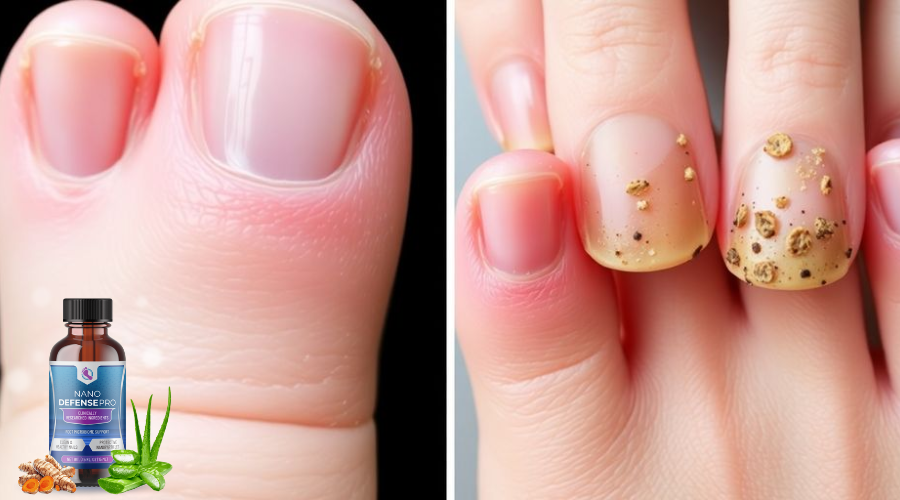How To Cure Nail Fungus Quickly
Dealing with nail fungus can be a real headache. It’s not just about the unsightly appearance; it can also be uncomfortable. While getting rid of it fast is everyone’s dream, it takes a bit of patience and the right approach. From medical treatments to home remedies, there’s a range of options to explore. Let’s dive into how you can tackle fingernail fungus effectively and prevent it from coming back.
Key Takeaways
- Medical treatments like prescription antifungals are the most effective way to treat nail fungus.
- Home remedies such as tea tree oil and vinegar soaks can support medical treatments.
- Maintaining proper nail hygiene is crucial in preventing the spread of fungus.
- Diet and lifestyle changes can boost your immune system and aid in recovery.
- Consult a healthcare professional if symptoms persist or worsen.
Understanding Fingernail Fungus

What Causes Fingernail Fungus?
Fingernail fungus, or onychomycosis, creeps in when fungi manage to infiltrate the nail bed. This usually happens through tiny cuts or breaks around the nail. The fungi thrive in warm, moist environments, making sweaty hands or damp gloves a perfect breeding ground. Nail salons can also be a culprit if tools aren’t properly sterilized.
Common Symptoms of Fingernail Fungus
Spotting a fungal infection early can save you a lot of trouble. Look for initial signs such as discoloration, with white, yellow, or brown patches appearing on the nail surface. Infected nails may also thicken, making trimming more difficult. You might notice a change in nail shape or a slightly foul odor. Sometimes the nail can become brittle or start to crumble.
How Fingernail Fungus Spreads
Fingernail fungus is pretty contagious. It can spread from one nail to another or even to other parts of your body. Sharing personal items like nail clippers or towels can also pass the fungus to others. Even a simple handshake can be risky if the fungus is active. To keep it from spreading, good hygiene and avoiding direct contact with infected nails is key.
Understanding the root causes and symptoms of fingernail fungus is the first step in tackling the problem head-on. Recognizing the signs early and maintaining good hygiene can prevent it from becoming a persistent issue.
Medical Treatments for Fast Results

Prescription Antifungal Medications
When dealing with stubborn nail fungus, prescription antifungal medications are often the go-to solution. These medications, available in oral and topical forms, are typically more effective than over-the-counter options. Oral antifungals like terbinafine (Lamisil) or itraconazole (Sporanox) work from the inside out, targeting the infection directly. However, they can come with side effects such as liver damage or skin rashes, so regular monitoring by a healthcare provider is essential.
Topical Treatments and Their Effectiveness
Topical treatments are less invasive and come in creams, gels, or nail lacquers. While they might be less effective on their own, they can be quite beneficial when combined with oral medications. These treatments need to be applied daily and can take several months to show results. Patience and consistency are key here.
When to Consider Surgical Options
In severe cases where medication fails, surgical intervention might be necessary. This could involve removing the nail, either surgically or using chemical methods, to allow a new, healthy nail to grow. Laser therapy is another option where high-dose light energy is used to kill the fungus. While these methods can be effective, they are usually considered last-resort options due to their cost and the recovery time involved.
If you’re struggling with nail fungus, it’s crucial to consult with a healthcare professional to determine the best course of action. Medical treatments are often necessary to fully eradicate the infection and prevent it from spreading further.
Home Remedies to Complement Medical Treatment

Exploring home remedies can be a great way to support medical treatments for nail fungus. These methods are often simple and can be done with items you might already have at home. Let’s dive into some effective home remedies.
Using Tea Tree Oil for Fungus
Tea tree oil is known for its antifungal properties, making it a popular choice for tackling nail fungus. To use it, apply a few drops directly onto the affected nail twice a day. You can use a cotton swab for this. Just be consistent, and you might see improvement over time. But remember, some folks might experience skin irritation, so it’s a good idea to do a patch test first.
The Role of Vinegar Soaks
Vinegar, especially apple cider vinegar, is another common home remedy for nail fungus. Its acidic nature helps in creating an environment that’s tough for fungi to thrive in. Mix one part vinegar with two parts warm water and soak your nails for about 20 minutes daily. It’s simple and easy to incorporate into your routine.
Probiotics and Nail Health
Probiotics are more than just good for your gut; they can also play a role in improving nail health. By maintaining a healthy balance of bacteria in your body, probiotics may help in preventing fungal infections. Consider adding probiotic-rich foods like yogurt or supplements to your diet.
Trying out these home remedies can be a gentle way to support your medical treatment for nail fungus. While they might not replace prescribed medications, they can certainly complement your efforts and possibly speed up recovery. Always consult with a healthcare professional if you’re unsure about trying a new remedy.
For more natural remedies to combat nail fungus, explore options like essential oils and apple cider vinegar here.
Preventing the Spread of Fingernail Fungus
Proper Nail Hygiene Practices
Keeping your nails clean and trimmed is a simple yet effective way to stop fungus from spreading. Wash your hands and feet regularly, and make sure to dry them thoroughly afterwards. Use a dedicated nail clipper for infected nails to avoid cross-contamination.
Avoiding Moisture Traps
Fungi love damp environments, so it’s crucial to keep your nails dry. Avoid wearing gloves or socks for long periods, especially if they get wet. Opt for breathable materials like cotton to help keep moisture at bay.
Choosing the Right Footwear
While it might sound odd, the shoes you wear can impact your nail health. Pick shoes that allow your feet to breathe. Tight shoes can trap moisture and create a breeding ground for fungus.
Preventing the spread of nail fungus is all about maintaining a dry, clean environment for your nails. It’s a small effort that can make a big difference in preventing the problem from worsening.
To learn more about how to cure nail fungus quickly, remember that prevention is just as important as treatment. Avoid walking barefoot in shared spaces to minimize the risk of picking up new infections.
When to Consult a Healthcare Professional
Signs You Need Medical Attention
If you’re dealing with nail fungus, there are certain signs that suggest you should see a doctor. If your nail becomes discolored, thickened, or starts to crumble, it’s time to get a professional opinion. These changes can indicate a more serious infection that might need medical treatment. Also, if the fungus spreads to other nails or skin, it’s wise to seek help.
Risks of Untreated Fungus
Ignoring nail fungus can lead to complications. The infection can spread to other nails or even your skin, causing pain and discomfort. In severe cases, it might lead to permanent nail damage or loss. People with diabetes or weakened immune systems are at higher risk for complications, making it even more important to treat nail fungus promptly.
Preparing for Your Doctor’s Visit
When you’re ready to see a doctor, go prepared. Make a list of your symptoms and any treatments you’ve already tried. This will help your doctor make a more accurate diagnosis. A dermatologist can conduct tests like nail scraping or biopsy to accurately diagnose a fungal infection, ensuring proper treatment. Be ready to discuss your medical history and any medications you’re currently taking. This information is crucial for your doctor to recommend the best treatment plan.
Taking action early can prevent the fungus from getting worse and help you get back to healthy nails faster. Don’t hesitate to reach out to a healthcare professional if you’re concerned about your nail health.
Lifestyle Changes to Support Treatment
Dietary Adjustments for Better Nail Health
Eating right can do wonders for your nails. A balanced diet full of vitamins and minerals strengthens your nails and helps fend off infections. Make sure to include foods rich in biotin, zinc, and iron. These nutrients are key for keeping your nails healthy and strong. You might want to add some eggs, nuts, and leafy greens to your meals. Plus, drinking plenty of water is a no-brainer for overall health, including your nails.
Stress Management and Immune Support
Stress is a sneaky culprit that can mess with your immune system, making it harder for your body to fight off nail fungus. Finding ways to chill out, like yoga or meditation, can really help. These practices not only calm your mind but also boost your body’s defenses. And don’t forget about getting enough sleep. A well-rested body is better equipped to handle infections.
Regular Nail Care Routine
Keeping your nails clean and trimmed is a simple yet effective way to prevent fungus from spreading. Here’s a quick routine to follow:
- Trim your nails straight across and file down thickened areas.
- Use a clean nail clipper and file every time.
- Avoid sharing nail tools with others.
Also, consider using an antifungal nail polish or treatment as part of your routine. It’s a small step that can make a big difference in keeping your nails healthy.
Making these lifestyle adjustments can be a game-changer in your fight against nail fungus. While these changes might seem small, they can significantly support your effective treatments for fingernail fungus and lead to healthier nails over time.
Making small changes in your daily routine can really help with your treatment. Simple things like eating healthier, staying active, and getting enough sleep can make a big difference. If you want to learn more about how to support your health, visit our website for tips and resources!
Wrapping It Up: Tackling Nail Fungus
Alright, so dealing with nail fungus isn’t exactly a walk in the park, but it’s not the end of the world either. Whether you’re trying out some home remedies or going the medical route, patience is key. Remember, these things take time, and it’s important to stick with your treatment plan. If you’re not seeing results, don’t hesitate to reach out to a healthcare professional for advice. And hey, once you’ve kicked that fungus to the curb, keep those nails clean and dry to avoid a repeat performance. You’ve got this!
Frequently Asked Questions
Can you get rid of fingernail fungus quickly?
Fingernail fungus can’t be cured quickly. Prescription medications are the only proven treatments, but they take time to work.
What are the signs of improving nail fungus?
If your treatment is working, you’ll notice healthy nail growth. If not, consider consulting your doctor for further steps.
Are home remedies effective for nail fungus?
Home remedies might help with symptoms but aren’t proven to clear up nail fungus completely like prescription treatments.
What causes nail fungus?
Nail fungus happens when fungi enter and grow in your nails, often due to moisture or injury.
Is tea tree oil a good treatment for nail fungus?
Tea tree oil has antifungal properties and may help, but it’s not as effective as prescription treatments.
When should you see a doctor for nail fungus?
See a doctor if the fungus doesn’t improve with home care or if you have diabetes or a weakened immune system.




Your article helped me a lot, is there any more related content? Thanks!